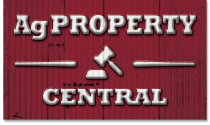
Bimbadeen at Bordertown is for sale by EOI. Photo: Nutrien Harcourts Keith
MIXED-farming country close to domestic markets and export pathways is in unprecedented demand in all parts of Australia, including the South Australian-Victorian border region.
One agent alone, Nutrien Harcourts Keith, has recently listed three very different properties which will test values as locals and those from beyond the district look to expand and diversify while money is cheap.
Wallowa Downs relists
At 2942 hectares, Wallowa Downs at Telopea Downs in Victoria is by far the largest of the three, and is listed at $9.15 million, or $3110/ha.
Irrigation gives this West Wimmera holding a surety of production which vendor John Jamieson said has comfortably carried 5000 ewes with lambs through an unusually dry winter.
“We’ve been using it to join Merino ewes to White Suffolk rams, and it’s good breeding or lamb- fattening country,” Mr Jamieson said.
Wallowa Downs has some established lucerne pasture, and cereal rye is currently providing feed for its sheep.
“It has a bigger root system than other cereals, and does well when it’s dry, but you could put all the irrigation into lucerne,” Mr Jamieson.
Located 62 kilometres north of Kaniva, the property is being sold to allow Mr Jamieson to consolidate his operations close to his family’s home property and Wattle Park White Suffolk stud at Finley in south-west New South Wales.
Wallowa Downs initially listed last year, but was withdrawn from the market and has provided the Jamiesons with additional capacity in the high-value prime lamb market.
Its topography is gently undulating with large open flats of grey sandy loams over clay, and large areas of clayed improved soils.
Its stand-out feature is a 2000-megalitre licence which can be used to water 650ha of irrigation via 13 centre-pivot circles, and four irrigation bores equipped with diesel submersible pumps.
Infrastructure includes a bluestone homestead, a six-stand shearing shed, a machinery shed, workshop and eight-person shearers’ quarters, as well as on-farm grain storage for 1175 tonnes.
Mr Jamieson said the property’s manager would consider staying on for the new owner.

Irrigation makes Wallowa Downs ideal for prime lamb production. Photo: Nutrien Harcourts
Nutrien Harcourts Keith agent Geoff Watts, in conjunction with Nutrien Harcourts Kaniva, has the listing.
Mr Watts said Wallowa Downs was attracting good inquiry locals and from producers in northern NSW.
“People are looking at the possibility of setting up a lamb feedlot, and the lucerne situation which you can achieve with this irrigation,” Mr Watts said.
“The irrigation is a stand-out feature of the property, with considerable infrastructure in place with room for expansion and increased profitability,” Mr Watts said.
Wallowa Downs has an annual average rainfall of around 375-400 millimetres, and can grow winter cereals and pulses as well as fodder crops.
Naracoorte NW a high yielder
Naracoorte NW covers 847ha, and features open heavy black-brown loam over clay and limestone, with an efficient water system including bores equipped with solar centrifugal pumps.
Mr Watts said one paddock of barley grown last year averaged 9t/ha, and the property has a history of producing high-yielding canola, pulse, cereal and fodder crops.
“The vendor has consistently practiced minimum tillage, maximum organic matter retention and soil health regimes, which has resulted in the soils producing more and more each year.”
Infrastructure includes an on-farm grain storage, machinery shed and steel cattle yards with crush and ramp.
Mr Watts said the location of cropping properties in the border region make them ideal suppliers to bulk exporters shipping out of Port Adelaide and Portland, and up-country and port-based container packers.
Ingham’s feedmill at Murray Bridge opened in 2019 and is the fourth-biggest grain-use site in Australia, consuming around 400,000t of grain per annum.
“It pulls a lot of grain out of the Murray-Mallee and the Mid North of South Australia, but the majority of feedgrain from Naracoorte NW goes to repeat buyers like dairies and piggeries.”
Viterra receival points are a further option for grain marketing, and independent crusher Squib Group at Millicent is helping to support the region’s canola market.
Mr Watts said the cropping history of Naracoorte NW, its annual average rainfall of around 575mm, and diverse marketing options for its crops, had all helped it to attract a number of potential buyers already.
“We’ve had good interest in it from the Yorke Peninsula and Eyre Peninsula, plus the Victorian Mallee.”
Naracoorte NW is being sold via an expressions-of-interest campaign which closes October 13.
Bimbadeen ideal add-on
Bimbadeen covers 551ha, and is being marketed as a highly productive cropping and grazing property.
Located 15km north of Bordertown, it is suited to prime lamb, wool and beef production as well as winter cropping.
Improved pastures comprise clovers, ryegrass and lucerne, and it consistently produces high-yielding crops of barley, canola, faba beans, lucerne and wheat.
Its soils are brown/grey loams to red/brown sandy loams over clay, and a considerable area has the benefit of clay spreading.
Improvements include a home, steel cattle yards and numerous sheds.
EOI on Bimbadeen close November 3.

HAVE YOUR SAY